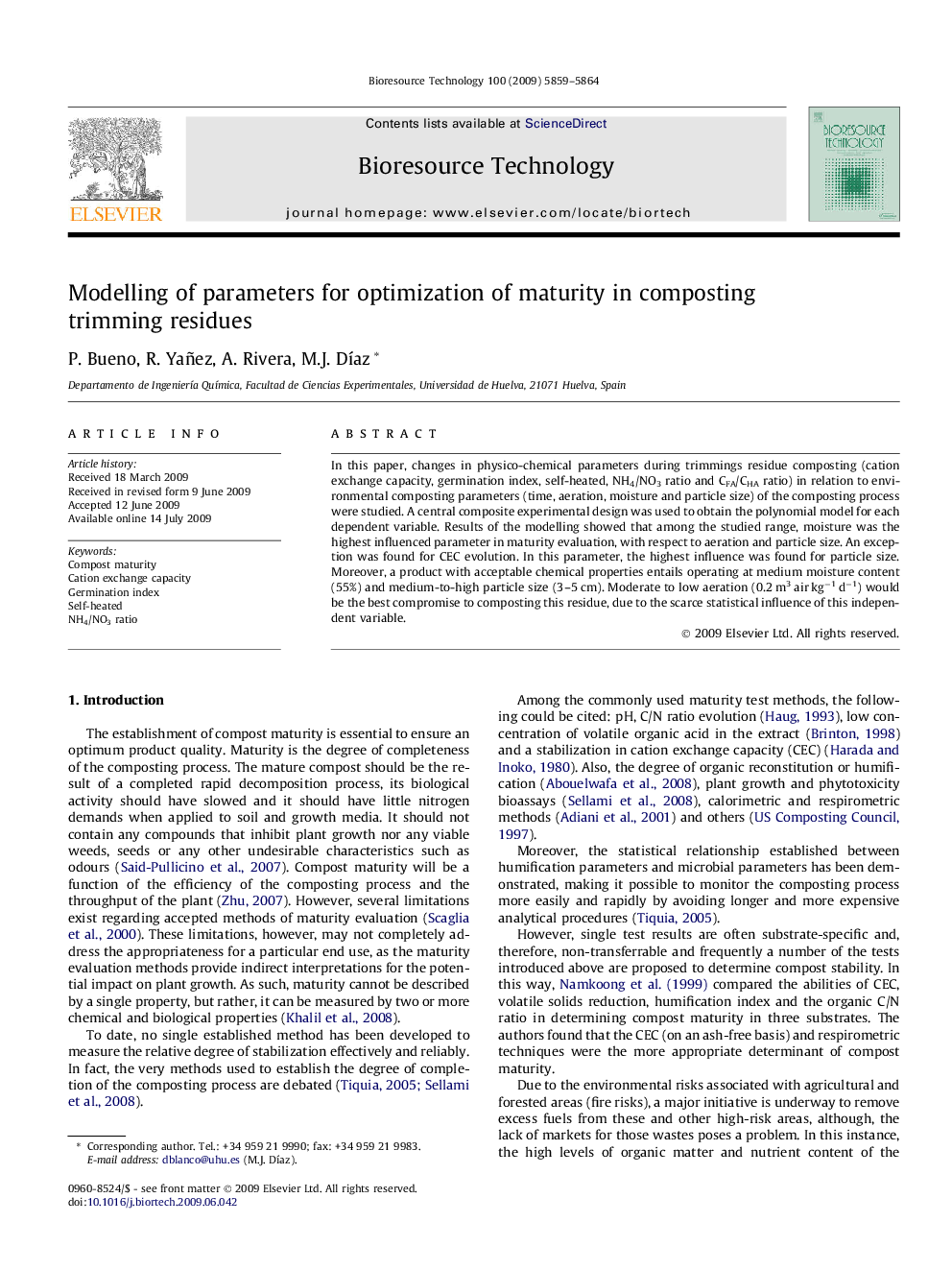| Article ID | Journal | Published Year | Pages | File Type |
|---|---|---|---|---|
| 683363 | Bioresource Technology | 2009 | 6 Pages |
In this paper, changes in physico-chemical parameters during trimmings residue composting (cation exchange capacity, germination index, self-heated, NH4/NO3 ratio and CFA/CHA ratio) in relation to environmental composting parameters (time, aeration, moisture and particle size) of the composting process were studied. A central composite experimental design was used to obtain the polynomial model for each dependent variable. Results of the modelling showed that among the studied range, moisture was the highest influenced parameter in maturity evaluation, with respect to aeration and particle size. An exception was found for CEC evolution. In this parameter, the highest influence was found for particle size. Moreover, a product with acceptable chemical properties entails operating at medium moisture content (55%) and medium-to-high particle size (3–5 cm). Moderate to low aeration (0.2 m3 air kg−1 d−1) would be the best compromise to composting this residue, due to the scarce statistical influence of this independent variable.
